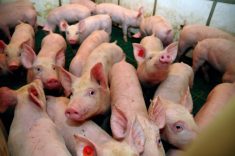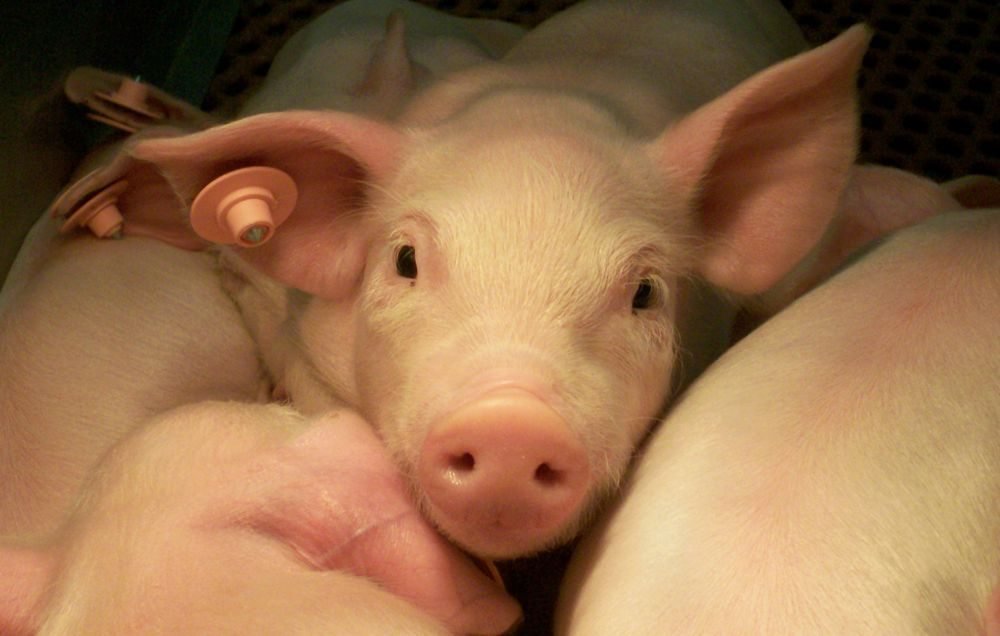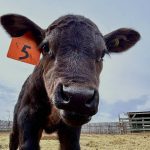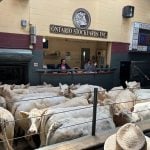CNS Canada — Over a year after porcine epidemic diarrhea (PED) tore into North America’s hog supply, hog production is on the upswing — but the same can’t be said for prices.
“I would say prices are likely nearing the bottom. We should start to rebound here once barbecue season sets in,” said Brad Marceniuk, livestock economist with Saskatchewan Agriculture in Saskatoon.
U.S. hog slaughter numbers over the last month were up 10 per cent and up eight per cent over eight weeks, he said. “Production has increased in North America.”
Read Also

U.S. grains: Soy drops on demand worries, corn firm as traders question lofty yield projections
U.S. soybean futures fell to a 1-1/2 week low on Tuesday as China continued to shun purchases from the United States and as forecasts for improved rains in the coming days reinforced expectations for a sizeable Midwest harvest.
This is largely due to North American producers’ success in fighting PED, which resulted in the cull of millions of animals throughout North America. The virus causes diarrhea in all ages of pigs and can lead to 100 per cent mortality in nursing pigs.
The cull resulted in prices skyrocketing to unseen heights. The average pork cutout price for the week of April 7, 2014 averaged US$131.97 per hundredweight (cwt); this week, that same cutout went for US$64.90/cwt.
As a result, some producers made a lot of money last year and decided to expand, while hard-hit operators waited for herds to recover size and strength before returning to the market.
“You get expansion when you see high profitability,” Marceniuk said, and “producers know more about the disease now; they’re better able to manage it.”
The price of pork, he expected, will entice shoppers to turn to it for their protein needs as the summer draws nearer.
“Pork is down 50 per cent while beef is up 10 per cent,” he said. While pork cutouts averaged US$65, cutouts for beef were at $254 and chicken was $152, he said.
“Strong poultry prices and strong beef prices should help bring up pork prices in the next while,” he said.
Marceniuk also noted the strike by port workers on the U.S. West Coast last year after Christmas may have contributed to pricing issues.
“We’ve got to watch”
As for PED, he warned, while the cases have dropped dramatically across North America, the problem still hasn’t been eradicated.
“We’re still getting cases in Western Canada, so we’ve still got to watch for it.”
Manitoba has reported five on-farm cases of PED in hogs, most recently in January. Saskatchewan’s site surveillance program turned up one positive environmental sample for the virus in January, but no cases yet in hogs. No cases have yet turned up in Alberta or British Columbia.
In Eastern Canada, Prince Edward Island confirmed PED in hogs at one farm in February last year. Quebec, since February last year, has reported PED cases in hogs at 14 sites, five of which received hogs from infected hog operations.
Ontario, where the virus first appeared in Canada in January last year, has since confirmed PED in hogs at 78 farms; the most recent case was confirmed March 23 at a farrow-to-wean operation in Elgin County.
In the U.S., where the virus first appeared in April 2013, PED has since been reported in hogs at almost 11,000 sites across 34 states.
— Dave Sims writes for Commodity News Service Canada, a Winnipeg company specializing in grain and commodity market reporting. Includes files from AGCanada.com Network staff.
















